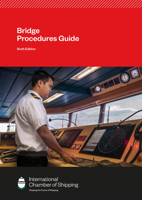Published: January 2023
It provides descriptions and definitions; provides ways to assess the current needs of diverse communities and identify gaps in services, policies and practice; and makes suggestions on how to fill these gaps.
The toolkit will help companies:
- Enhance existing diversity assessments and increase awareness of diversity issues and needs;
- Embed the principle of diversity throughout their service and influence strategic planning at all levels;
- Develop good practice;
- Meet legislative requirements;
- Assess current performance, to identify any barriers preventing progress and to provide advice and guidance on how to overcome these; and
- Enhance monitoring and data collection mechanisms to highlight the needs of different communities.
Table of Contents
Foreword
Chapter 1: The value of diversity and inclusion
1.1 Diversity
1.2 Inclusion
1.3 Creating an inclusive and diverse workforce
1.4 The business rationale
1.5 Benefits
1.6 The UN Sustainable Development Goals
1.7 The IMO and the SDGs
1.8 Corporate social policies
Chapter 2: Areas of diversity – definitions and explanations
2.1 Sex and gender
2.1.1 Women in shipping
2.1.2 Gender identity
2.1.3 Gender expression
2.1.4 Gender definitions
2.1.5 Gender discrimination, bias and corporate cultures
2.2 Race and ethnicity
2.3 Religion or belief
2.4 Age
2.4.1 Age discrimination
2.4.2 The generations
2.5 Social background
2.6 Disability
2.7 Marriage and civil partnership
2.8 Pregnancy, maternity, paternity and adoption
2.9 Menopause
2.10 Andropause
Chapter 3: Diversity and inclusion policies
3.1 Equal pay
3.2 Training and development
3.2.1 Coaching
3.2.2 Training tools
3.2.3 Interview training
3.2.4 Workshops and forums
3.2.5 Respect and engagement training
3.2.6 Communicating diversity and inclusion policies
3.3 Company inclusive culture
3.3.1 Workplace environment
3.3.2 Employee handbooks and intranet systems
3.3.3 One to one meetings
3.3.4 Four steps to creating a D&I culture
3.3.5 D&I calendar sample
3.3.6 Developing a corporate strategy
3.3.7 Example of a strategy template
3.3.8 Opportunities to intervene and agents of change
3.3.9 Stereotypes and prejudice
3.3.10 Discrimination, harassment and victimisation
3.3.11 Managers and leaders
3.3.12 Leadership training
3.3.13 Skip level meetings
3.3.14 Policies
3.4 Recruitment, selection and retention
3.4.1 Unconscious bias in recruitment
3.4.2 Job descriptions and recruitment advertising
3.4.3 Language
3.4.4 Gender-neutral terms
3.4.5 Advertising
3.4.6 Interview panels
3.4.7 Selection
3.4.8 Retention
3.4.9 Agility
3.4.10 Sponsorship
3.4.11 Mentoring, buddies and coaching
3.4.12 Attracting a diversity of employees
3.4.13 Talent identification and development
3.5 Wellbeing and safety
3.5.1 Physical health at sea
3.5.2 Communication
3.5.3 Flexible working for seafarers
3.5.4 Flexible hiring
3.5.5 Engagement
3.5.6 Mental health
3.5.7 The impact on business of COVID-19
3.6 Disability and medical fitness
3.7 Clothing
3.7.1 Personal protective equipment
3.7.2 Religious dress
3.8 Food and diet
3.9 Religion or belief
3.9.1 Faith and burial practices
3.10 Other tools
3.10.1 ICS tools
3.10.2 Helplines for seafarers
3.11 Career progression for seafarers
3.11.1 Transitioning to shore
3.11.2 Career pathways
3.11.3 Developing opportunities for all staff
3.12 ICS Maritime Diversity and Inclusion Charter
Chapter 4: Measuring, monitoring and driving change
4.1 Future proofing
4.1.1 Innovation
4.1.2 Strategy – how to
4.2 Monitoring
4.2.1 Monitoring methods
4.2.2 Using monitoring results
4.3 Targets
4.4 Tools
4.4.1 Surveys
4.4.2 Diversity scorecards
4.5 Acquisitions
4.6 Implementation
4.6.1 D&I policy documents
4.6.2 Developing initiatives – a timeline
4.6.3 Action plan example
4.6.4 Employers’ communication
4.6.5 Senior management
4.6.6 Evaluation and continuing audit
4.7 Social media
4.7.1 Social media and D&I enhancement
4.7.2 Hashtags
Bibliography






































